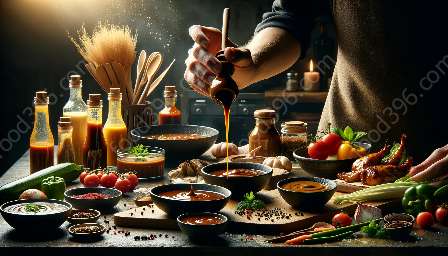Béarnaise sauce is a classic French sauce that adds a touch of indulgence and elegance to any dish. Its rich, creamy texture and flavorful infusion of herbs and spices make it a favorite among food enthusiasts and connoisseurs.
Exploring the art of making Béarnaise sauce opens a world of culinary possibilities, deepening your understanding of sauce making and food preparation techniques. In this comprehensive guide, we delve into the history, ingredients, and step-by-step process of preparing this delectable sauce.
The Origins of Béarnaise Sauce
The origins of Béarnaise sauce can be traced back to France, particularly the Béarn region, from which it takes its name. The sauce is believed to have been created at the end of the 19th century, making it a relatively young addition to the world of classic French sauces. Its creation is credited to the renowned French chef Auguste Escoffier, who was known for his innovative culinary contributions.
Béarnaise sauce is closely related to the more widely known hollandaise sauce, as both are emulsions of egg yolks and butter, flavored with herbs and flavored with a delicate touch of acidity. The key differentiator of Béarnaise is the inclusion of shallots, tarragon, and vinegar reduction, which impart a distinct and aromatic flavor profile.
Ingredients and Flavor Profile
Creating the perfect Béarnaise sauce requires a selection of high-quality ingredients that harmonize to produce its signature taste and texture. The traditional ingredients include:
- Butter: Unsalted butter provides the rich and creamy base of the sauce.
- Egg Yolks: The emulsifying agent that helps bind the sauce together.
- Shallots: Finely chopped shallots add depth and complexity to the flavor profile.
- Tarragon: Fresh tarragon leaves contribute a distinct, herbaceous aroma and taste.
- Vinegar: A reduction of vinegar infuses the sauce with a subtle acidic tang.
- Salt and Pepper: Seasoning to enhance the overall flavor.
The combination of these ingredients creates a luxurious and delectable sauce with a fine balance of richness, acidity, and herbaceous notes.
Mastering the Sauce-Making Process
The process of making Béarnaise sauce requires patience, precision, and a keen understanding of sauce-making techniques. While it may seem daunting at first, following a step-by-step approach can demystify the process and elevate your culinary skills.
Here is a simplified version of the traditional Béarnaise sauce-making process:
- Clarify the Butter: Melt the butter over low heat to separate the milk solids from the golden liquid, creating clarified butter.
- Prepare the Flavor Base: Combine the finely chopped shallots, fresh tarragon, and vinegar reduction in a saucepan, allowing the flavors to infuse over gentle heat.
- Whisk the Egg Yolks: In a separate bowl, vigorously whisk the egg yolks until they become slightly pale and thickened.
- Emulsify the Sauce: Gradually pour the clarified butter into the egg yolk mixture while whisking continuously to create a smooth emulsion.
- Combine with Flavor Base: Strain the infused liquid from the flavor base into the emulsified mixture, whisking to incorporate the flavors.
- Season and Serve: Add salt and pepper to taste, and your Béarnaise sauce is ready to grace your culinary creations.
Enhancing Your Culinary Repertoire
Mastering the art of making Béarnaise sauce not only adds a delightful and luxurious touch to your culinary repertoire but also expands your knowledge of sauce making and food preparation techniques. The intricate balance of flavors, texture, and aroma that define Béarnaise sauce exemplifies the artistry and craftsmanship involved in the culinary world.
Pairings and Serving Suggestions
Béarnaise sauce is a versatile accompaniment that complements a wide range of dishes, including:
- Grilled steak or pork chops
- Poached or grilled fish
- Roasted vegetables
When serving Béarnaise sauce, consider presenting it as a contrasting or complementary element to your main dish, allowing its velvety texture and herbaceous notes to elevate the overall dining experience.
Exploring Beyond Tradition
While traditional Béarnaise sauce holds its place in culinary history, there are modern interpretations and variations that cater to diverse palates and dietary preferences. Experimenting with alternative ingredients, such as vegan butter or non-dairy milks, offers opportunities to create dairy-free or plant-based versions of this beloved sauce, ensuring that its charm reaches a broader audience.
In conclusion, the journey of preparing Béarnaise sauce embodies the artistry of sauce making and the meticulous attention to food preparation techniques. It's a testament to the culinary craftsmanship that continues to inspire and delight food enthusiasts around the world.

